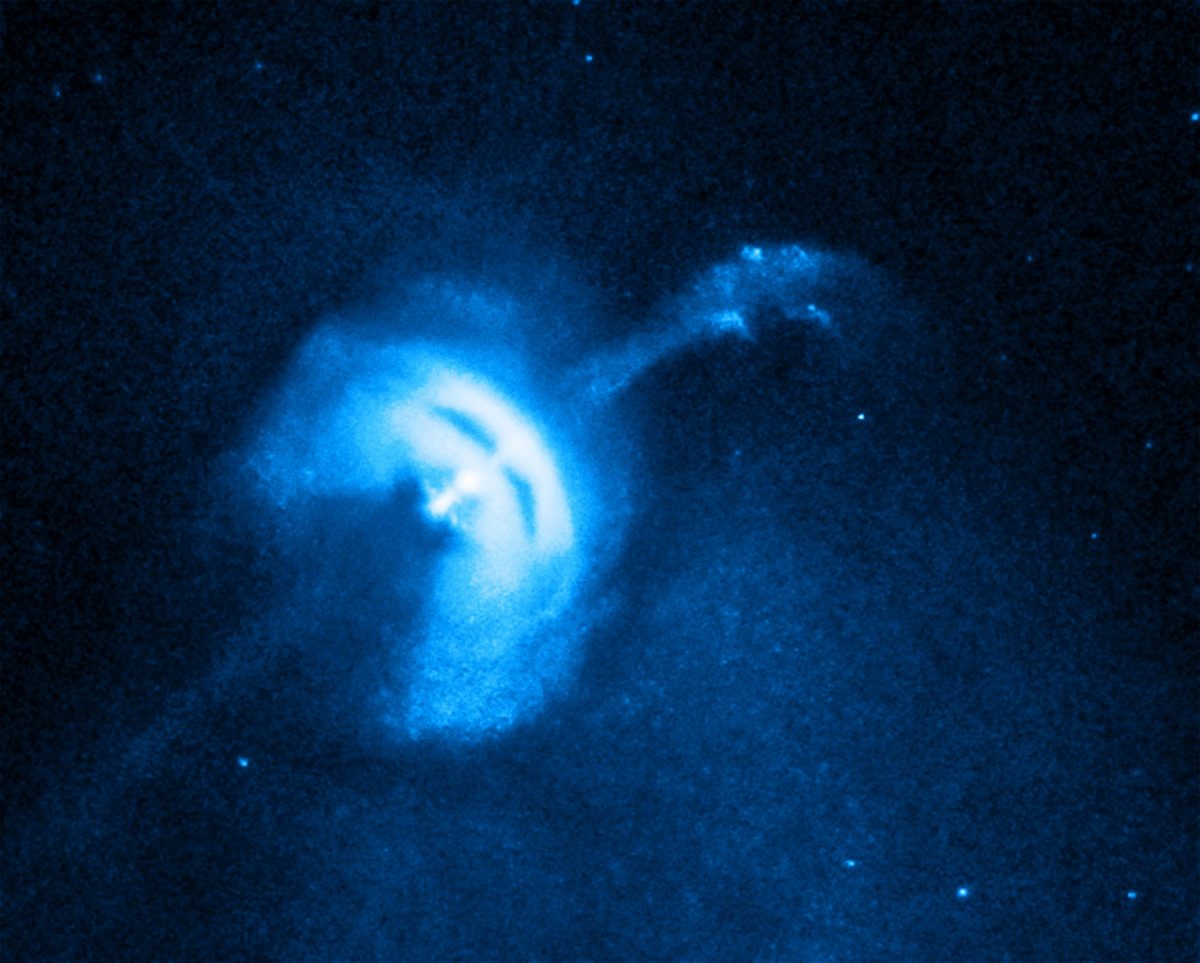
This deep image from NASA’s Chandra X-ray Observatory shows the Vela pulsar, a neutron star that was formed when a massive star collapsed. (Source: NASA)
Many thanks to SWLing Post contributor, Roger, who writes:
Hello Thomas,
I thought you, along with some others in the SWLing community, might be interested in the musical renditions, or sonifications, that were released 9/22/2020 by NASA’s Chandra X-ray
Center Universe of Sound website.
https://chandra.si.edu/sound/index.htmlI found it utterly fascinating, and hope you do too.
Source: ScienceNews, Vol. 198 ? No. 8 (November 7, 2020) p. 4.
Many thanks, Roger for sharing this! Below, I’ve copied one excerpt with one pulsar sound. I’d encourage you to check out the others by clicking here.
Listen to a Pulsar Clock
Turning a pulsar’s rotational data into sound makes it easier to observe patterns and make comparisons between different nebulous pulsar rotational speeds. as a pulsar ages it spins at a slower speed. listen to the different pulsar heartbeats. what can you guess about how fast these different pulsars rotate? Which pulsar is the oldest? How about the youngest?
Neutron stars are strange and fascinating objects. They represent an extreme state of matter that physicists are eager to know more about. Yet, even if you could visit one, you would be well-advised to turn down the offer.
The intense gravitational field would pull your spacecraft to pieces before it reached the surface. The magnetic fields around neutron stars are also extremely strong. Magnetic forces squeeze the atoms into the shape of cigars. Even if your spacecraft prudently stayed a few thousand miles above the surface neutron star so as to avoid the problems of intense gravitational and magnetic fields, you would still face another potentially fatal hazard.
If the neutron star is rotating rapidly, as most young neutron stars are, the strong magnetic fields combined with rapid rotation create an awesome generator that can produce electric potential differences of quadrillions of volts. Such voltages, which are 30 million times greater than those of lightning bolts, create deadly blizzards of high-energy particles.
These high-energy particles produce beams of radiation from radio through gamma-ray energies. Like a rotating lighthouse beam, the radiation can be observed as a pulsing source of radiation, or pulsar. Pulsars were first observed by radio astronomers in 1967. The pulsar in the Crab Nebula, one of the youngest and most energetic pulsars known, has been observed to pulse in almost every wavelength—radio, optical, X-ray, and gamma-ray.

This link has the same pulsars plus a few more:
https://www.compadre.org/osp/EJSS/3943/103.htm
I found the last one very interesting! 🙂
Pitch Perfect. I love it. Thanks 13dka